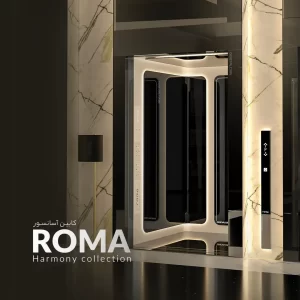
How To Lay Bricks Of Elevator Pit
To ensure the safety of individuals working in the building, it is necessary to completely cover the area around the elevator shaft and avoid transporting materials from inside the elevator pit to prevent damage to the rails. After the ironwork and installation of the rails, it is essential to cover the rails with nylon to prevent them from getting dirty and damaged. It is recommended to protect the metal structures of the elevator shaft from corrosion, for which galvanized structures can be used. For bolt and nut structures, they should be protected with anti-corrosion coatings before installation. Similarly, for welded connections, anti-corrosion coatings should be used after the welding operation is completed.
After the ironwork and installation of the rails, all sides except the wall where the elevator door is installed should be covered with walls of various types such as partition walls, masonry walls, metal sheets, or glass, provided that the shaft wall has sufficient mechanical resistance and can withstand the incoming forces. Also, when applying a force of 300 Newton per 5 square centimeters, there should be no permanent deformation and the elastic deformation should be up to 15 millimeters.
The wall covering of the shaft should not be prone to crumbling or attracting dust and soil and should also be fire-resistant. For example, blocks can be used and covered with white cement. This should be done from the shaft floor to the ceiling under the elevator shaft, and afterward, no holes or cavities should remain in the shaft wall, and the shaft wall should be completely smooth and polished. Also, it is better to have a distance between the masonry wall and the elevator shaft casing, and if there is a gap between the ironwork and the wall that cannot be covered, it is better to fill these spaces.
After cement work, it is necessary to thoroughly clean the casings, bolts nuts, and brackets, and if there are any protrusions or recesses, cover them at a 60-degree angle to the horizon. Furthermore, necessary provisions for the passage of three-phase electricity and telephone lines to the engine room should be considered from outside the shaft.


